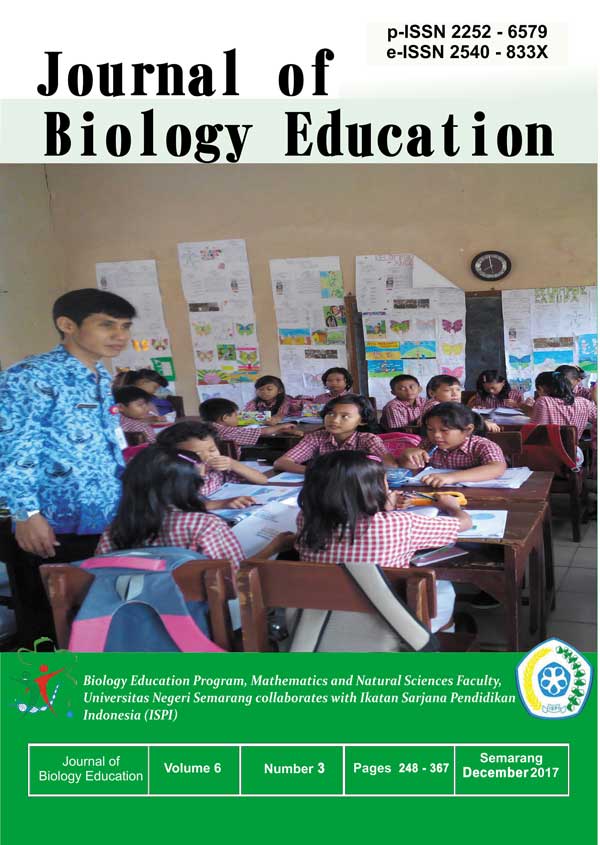Learning Materials on Environmental Change of Waste and Waste Recycling With SETS Bervisi Module to Improve Student Learning Outcomes in SMA
Abstract
The development of science curriculum aims to achieve the dimensions of knowledge competence, scientific work, and scientific attitude as daily behavior in interacting with society, environmental and technological utilization. Teaching materials are used in the form of book packages and not yet available learning modules. This study aims to determine the feasibility and effectiveness of SETS biological module vision of environmental change and recycling of waste as teaching materials. This research is a research and development with a quasi-experimental design. The design of this study used a pretest-posttest control group design pattern. The population in this study were all students of class X MIA SMA N 2 Purbalingga, with class X MIA 3 sample as experiment class, and class X MIA 2 as control class. The product was developed in the form of a Biology learning module with SETS vision of recycled materials, waste and environmental waste recycling. The prerequisite test includes the normality test of pretest learning results, with α = 0.05 with the initial conditions of the control class and the experiments not significantly differing. The result of posttest obtained then analyzed by t-test. The result of t-test analysis obtained t arithmetic price> t table price 10,58> 1,67, it can be stated that there is a significant difference between the result of control study and student experiment class. Based on the result of the research, it is concluded that 1) Biology Module SETS is suitable to be used as teaching materials, 2) the use of SETS biology module to study environmental change, waste and waste recycling effectively improve student learning outcomes.
The copyright of the article once it is accepted for publication shall be assigned to the journal as the publisher. The intended copyright includes the right to publish the article in various forms (including reprints). The journal maintains the publishing rights to the published articles.
This work is licensed under a Creative Commons Attribution 4.0 International License.








